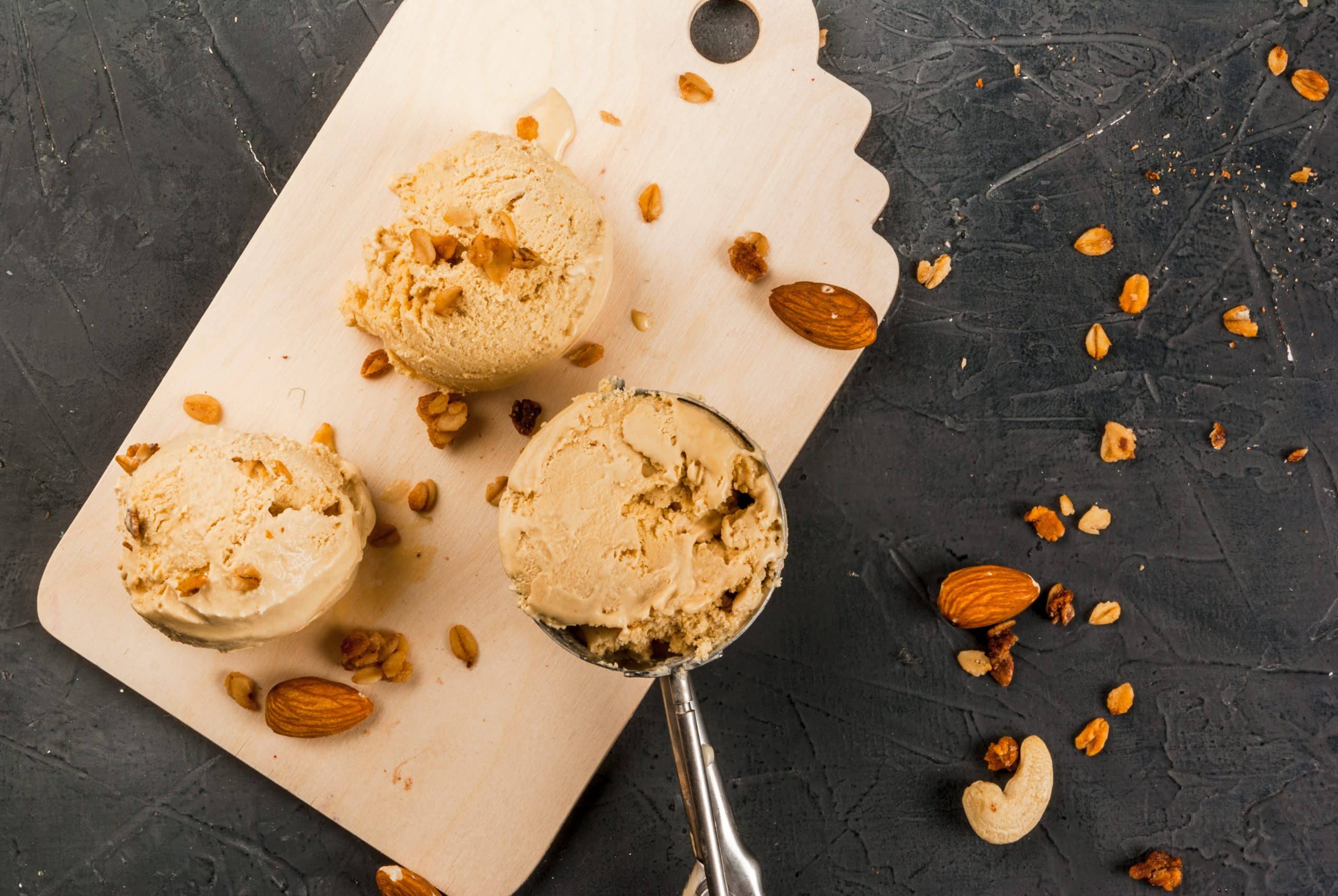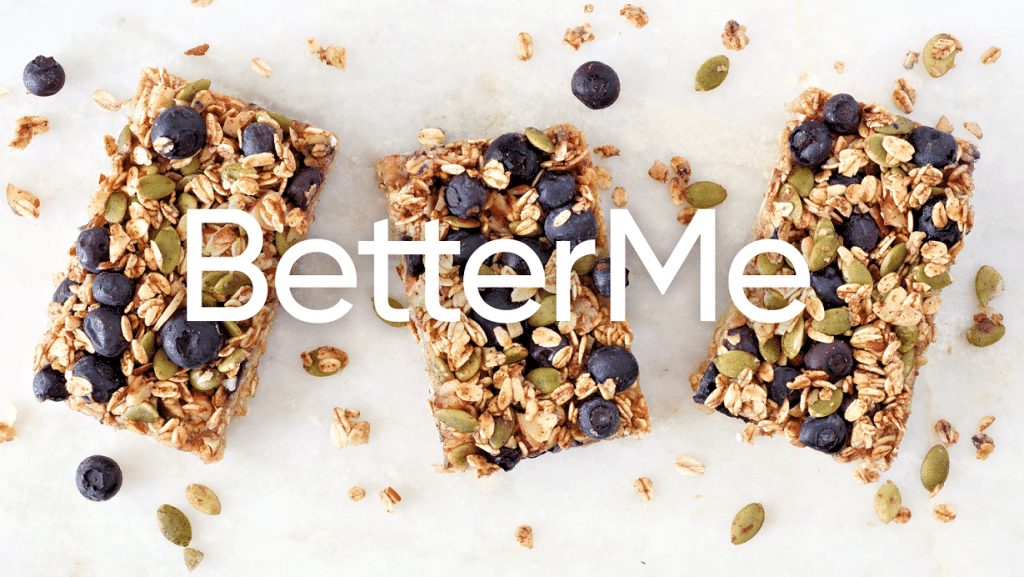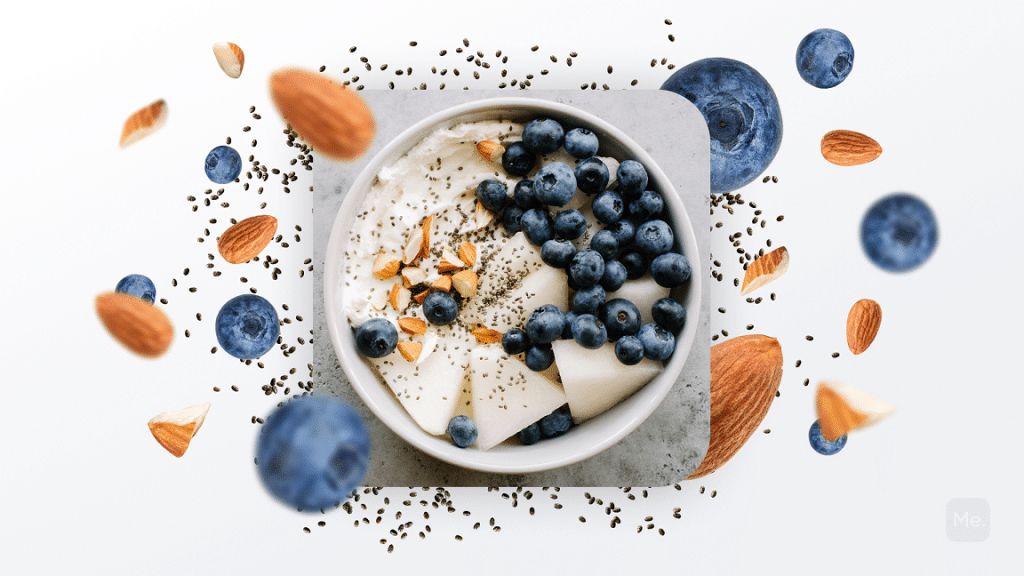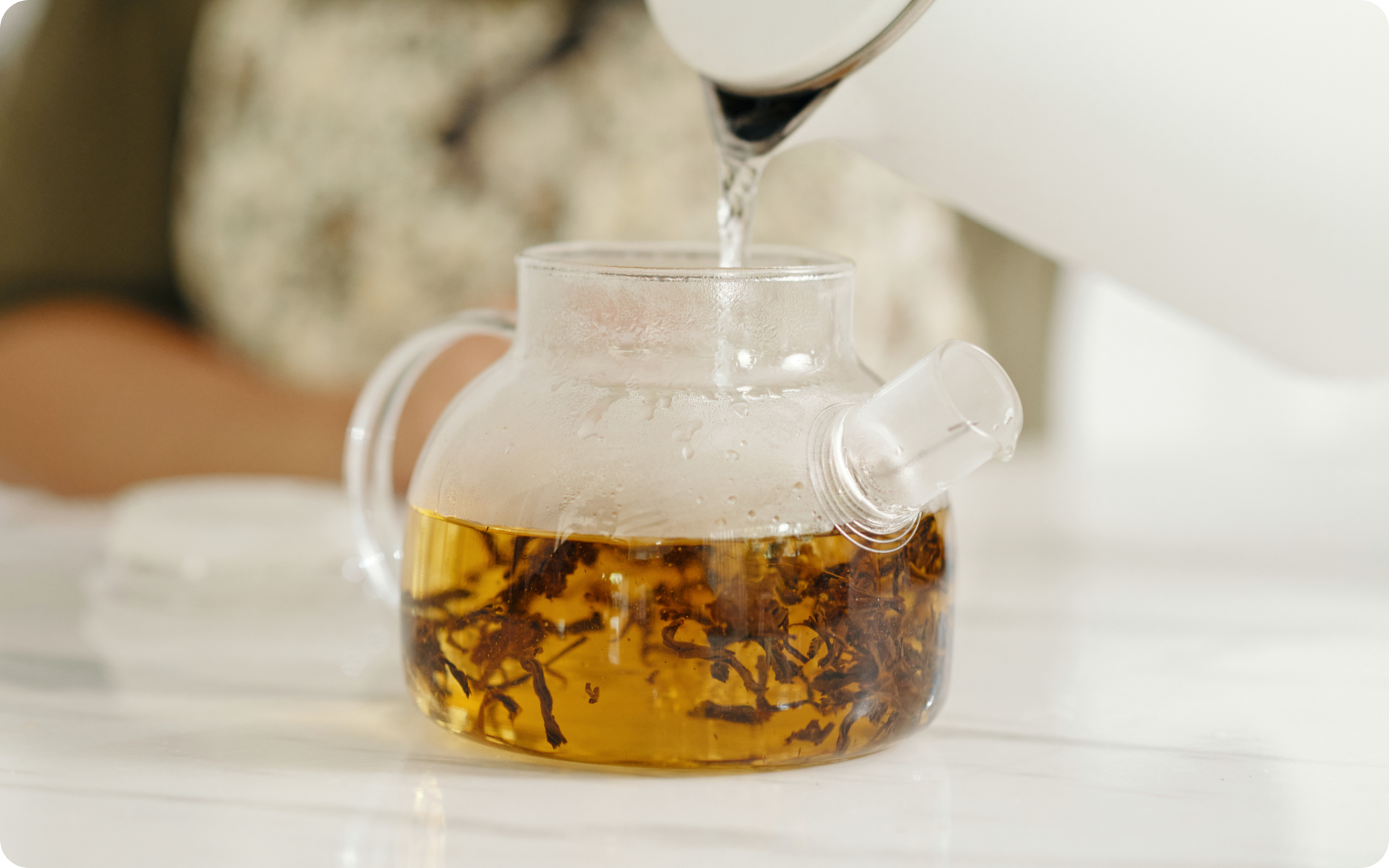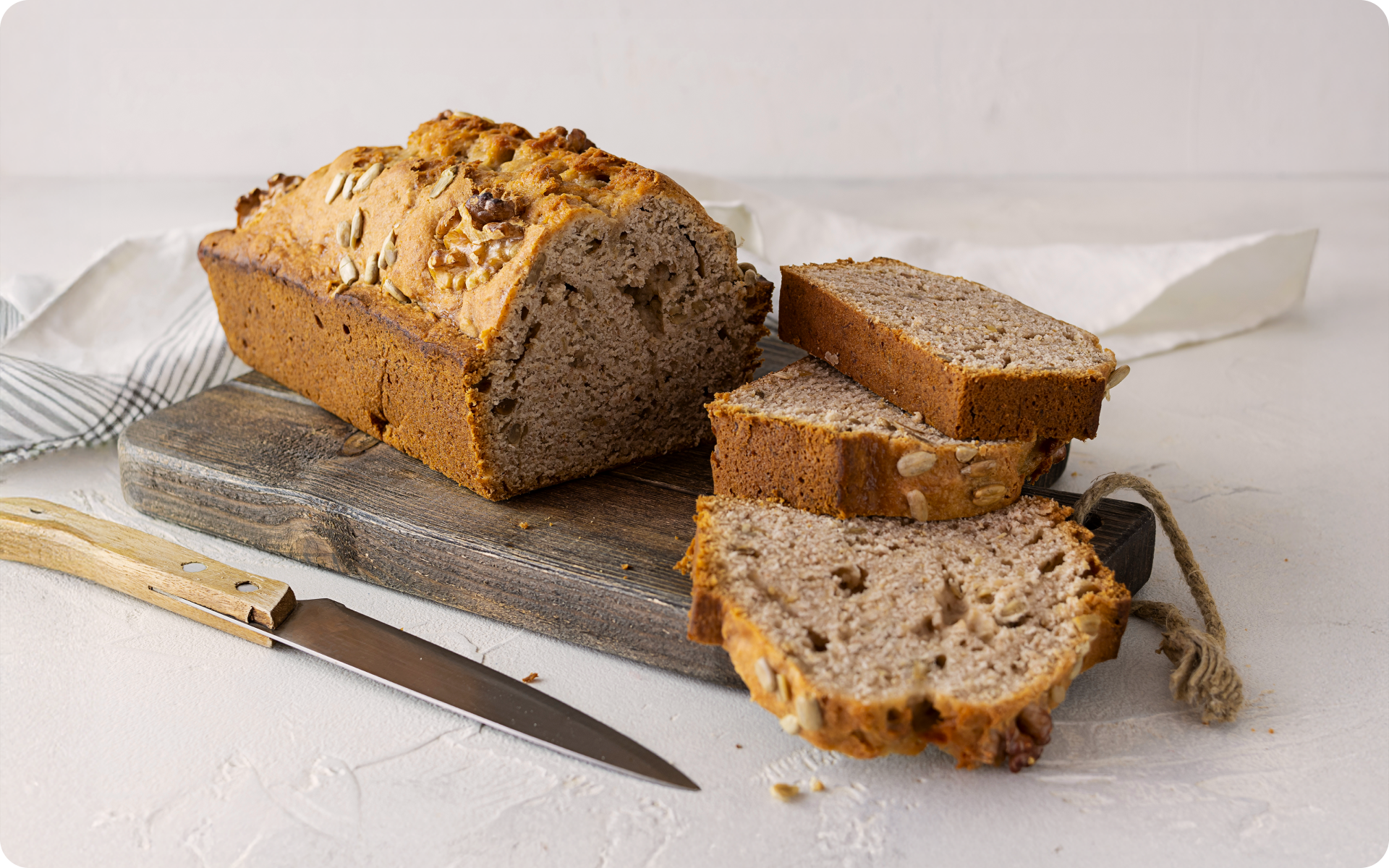A hankering for something sweet and creamy, with crunchy chewy toppings. How about the nostalgia when you hear the ice cream truck roll down your street. Whatever your reason is, if you’re looking for a healthy ice cream recipe at home, you’ll be glad to discover nice cream.
Listen, even I am a bit skeptical about the trendy recipes that are at seemingly every corner of the internet, but this one is a game-changer. It’s healthy, guilt-free, and easy to make.
No, this is not clickbait; Nice cream is your answer to a healthy frozen treat. The original version is made with just frozen bananas, but we’ll share our favorite variations on this theme as well.
Lean and toned up body isn’t just a far-fetched fantasy. Check out the BetterMe app and watch it propel your weight loss journey into high gear!
What Is The Healthiest Form of Ice Cream?
The healthiest form of ice cream is one that is low in added sugar, high in protein, made from natural ingredients, potentially dairy-free, and enjoyed in moderation. Here’s what to look for:
Low Sugar Content
The World Health Organization suggests that adults consume no more than 6 teaspoons (25 grams) of added sugar per day (9). Many commercial ice creams can contain up to 20 grams of sugar per serving, nearly reaching the daily limit in just one scoop. That said, the healthiest ice creams are those with low added sugar content.
High Protein
Protein is an essential nutrient that helps repair body tissues and supports immune functions. Ice cream that is high in protein, such as those made with Greek yogurt or those that have protein added to them, can be a healthier choice as they will contribute to your daily protein needs (8).
Natural Ingredients
Ice cream made with fresh, natural ingredients is sometimes seen as healthier than those made with artificial flavors and preservatives. This includes using real fruit for flavoring, natural sweeteners, and high-quality dairy or plant-based alternatives.
Dairy-Free Alternatives
For those who are lactose intolerant, vegan, or simply prefer to avoid dairy, there are many dairy-free alternatives available. These can be made from almond milk, coconut milk, soy milk, or even avocado, and provide a variety of nutrients and offer a creamy texture similar to traditional ice cream.
Portion Size
Even the healthiest ice cream should be enjoyed in moderation. Remember that portion size matters, and try to stick to a serving size of about half a cup.
Can Homemade Ice Cream Be Healthy?
Absolutely,you can make a healthy ice cream recipe without machine, and it can be a delicious adventure of culinary creativity. Here’s the full scoop:
Ingredient Autonomy: You’re the Chef
In commercial ice cream production, additives and preservatives are often used to prolong shelf life. In your kitchen you hold the power. You can choose fresh, wholesome ingredients, free from artificial preservatives or any other ingredients you’d prefer to avoid.
The Sugar Situation: Sweet Control
Commercial ice creams can contain staggering amounts of sugar. Some brands have up to 20 grams per half-cup serving, which is a whopping 80% of the recommended daily limit for women according to the American Heart Association (6).
When you’re the one wielding the ice cream scoop at home, you control the sweetness. You can adjust the sugar levels.
Dairy Decisions: Quality Counts
In the mass-production world, quality can sometimes be compromised. Many commercial brands use reconstituted milk powder, while others might even incorporate non-dairy fats. But when you’re stirring the pot, you can opt for high-quality dairy or plant-based alternatives, ensuring you’re not skimping on nutritional value.
Sensible Servings
With store-bought ice cream it’s all too easy to dive spoon-first into the tub. However, the USDA lists one serving of ice cream as just half a cup, far less than what most people scoop out. Making your own means you can create sensible portions, helping to curb overindulgence without feeling deprived.
Unleash Your Creativity
Homemade ice cream is your canvas and you’re the artist. You’re free to experiment with flavors that go beyond the vanilla-chocolate-strawberry trinity. Want to toss in some antioxidant-rich blueberries or sprinkle heart-healthy walnuts? Perhaps your inspiration lies in an exotic blend of cardamom, rose water and pistachios? The possibilities are endless.
Read more: 4 Of The Best Mung Bean Recipes To Try.
What Is The Most Diet Friendly Ice Cream?
The most diet-friendly ice cream is “nice cream”. As its name suggests, nice cream is said to be a kinder, gentler take on the traditional dessert we all know and love. It’s a healthier alternative that is not only friendly to your waistline but also packed with nutrients.
It’s All About the Bananas
The main ingredient in nice cream is ripe, frozen bananas. They’re naturally sweet, so there’s no need for added sugars or sweeteners. Just blend them up and voila – you’ve got a creamy, dreamy base that tastes surprisingly like soft-serve ice cream.
A single large banana provides approximately 121 calories, 0.5 g fat, 31g carbohydrates, 4g fiber, and 1g protein. This nutrient-dense base can be enhanced with additional fruits, nuts, or spices to create a variety of flavors (1).
You’re the Boss of Your Bowl
Want to mix things up? Add in some other fruits like strawberries or mangoes for a tropical twist. You can even add cocoa powder for a chocolaty delight. Your healthy ice cream recipe fruit options are endless.
No Fancy Gadgets Needed
Who said you need an ice cream machine to make ice cream? Not us! With nice cream all you need is a good blender or food processor. It’s a healthy ice cream recipe without an ice cream machine – simple and straightforward.
Weight Loss Friendly
Nice cream is low in calories and high in fiber, making it an excellent choice for those trying to shed a few pounds. Plus, it’s filling so you’ll be less likely to reach for unhealthy snacks after. However, the exact nutritional content will depend on what additional ingredients you choose to add.
Dairy-Free and Vegan
For those following a dairy-free or vegan diet, nice cream is a perfect choice. Since it’s made primarily from bananas, it contains no dairy or animal products. Just be sure to check the labels of any additional ingredients you may want to add, to be sure they also meet these criteria.
How To Make Nice Cream
Making nice cream is a simple and fun process that can be broken down into six detailed steps. Here’s a healthy ice cream recipe for weight loss:
Step 1: Prepare Your Bananas
Start with ripe bananas, as they are sweeter and blend more easily. Peel and chop them into chunks, then lay them in a single layer on a parchment-lined plate or tray.
P/S – although bananas are the most common base for nice cream due to their creamy texture when blended, other fruits with a custard-like consistency can work well too.
- Bananas: The classic choice for a creamy, mild base.
- Mangoes: These offer a tropical flavor and blend into a nice, smooth consistency
- Avocados: Their high fat content results in a rich, creamy texture, but you may want to add a sweeter fruit or some natural sweetener to balance the flavor.
- Papayas: These have a custard-like consistency when ripe and provide a good base for nice cream.
- Cantaloupe: When ripe and frozen, cantaloupe can be used to make a lighter, refreshing version of nice cream.
- Cherries: Cherries work best when blended with other fruits for a sweeter, more balanced flavor.
- Apricots: Pitted, frozen apricots can provide a unique flavor and offer a fiber-rich base.
- Peaches: Frozen peaches can be used for a sorbet-style nice cream. It’s a bit icier than banana-based versions, but still sweet and refreshing.
Step 2: Freeze the Bananas
Place the chopped bananas in the freezer until they are completely frozen. This usually takes about two hours, but it’s best to leave them overnight if you have the time.
Step 3: Blend the Bananas
Put the frozen banana chunks into a high-speed food processor or blender. Blend on high until the mixture becomes creamy and smooth. You may need to stop and scrape down the sides of the blender a few times to ensure everything is well blended.
Step 4: Add Liquid If Needed
If the mixture is too thick, add a small amount of plant milk (such as almond, soy, or rice milk) to help it blend more easily. Start with a small amount, as adding too much liquid can make the nice cream too runny.
Step 5: Add Flavorings
Once the banana base is creamy and smooth, you can add any flavorings you like. This could be vanilla extract, cocoa powder, frozen berries, peanut butter, cinnamon, or anything else that suits your taste.
Step 6: Serve or Freeze for Later
You can serve the nice cream immediately for a soft-serve texture, or you can transfer it to an airtight container and freeze it for a couple of hours for a firmer consistency. Before serving, top it with extras such as dark chocolate shavings or nuts for added crunch and flavor.
Dropping pounds by the dozens without putting yourself through the wringer is everyone’s weight loss pipe dream. But what if we told you that the BetterMe app can make that happen? Keep yourself in prime shape with our fat-blasting workouts, delicious budget-sparing recipes, and body-transforming challenges with our app!
What Can I Eat With Ice Cream To Make It Healthier?
If you’re looking to make your ice cream indulgence a bit healthier, there are several additions you can consider. Remember, while these additions can make your ice cream healthier, it’s still important to enjoy this treat in moderation.
Here’s how you can add nutritional value to your favorite frozen treat:
Fresh Fruits
Adding fresh fruits not only enhances the flavor of your ice cream but also boosts its nutritional profile. Berries such as strawberries, blueberries, or raspberries are packed with antioxidants and fiber. Bananas provide potassium, while peaches offer vitamin C. The natural sweetness of fruit can also help satisfy sugar cravings (5).
Nuts and Seeds
Nuts and seeds like almonds, walnuts, chia seeds, or flaxseeds can be sprinkled on top of your ice cream for a crunchy texture. They’re rich in healthy fats, protein, and fiber, making your dessert more filling and nutritious (7).
Dark Chocolate
Dark chocolate, especially the kind that’s 70% cocoa or more, is loaded with antioxidants and can be a healthier choice than milk chocolate or other sugary toppings. Shave some dark chocolate over your ice cream for a bittersweet contrast (4).
Whole Grain Cereal
Consider topping your ice cream with whole grain cereal. This can add fiber and help slow the absorption of sugar into your bloodstream, preventing spikes in blood sugar levels (3).
Greek Yogurt
Mixing Greek yogurt into your ice cream can add a tangy flavor and boost the protein content. It’s also a great way to achieve a creamier texture. If you’re dairy-free, opt for a plant-based Greek yogurt alternative.
Aromatic Spices
Spices like cinnamon, nutmeg and cardamom can not only add an interesting twist to your ice cream recipe but also offer antioxidant benefits. This is particularly true of cinnamon, which has been linked to improved blood sugar control and anti-inflammatory properties (2).
Read more: Healthy Fast Food Breakfast: Fuel Your Mornings the Wholesome Way!
Frequently Asked Questions
Why Put Eggs in Ice Cream?
Eggs are used in ice cream to create a smoother, richer texture and flavor. The yolks contain fat and lecithin, which emulsify the ice cream mixture, resulting in a creamier consistency.
What Is Like Ice Cream, But Healthy?
“Nice cream,” a frozen dessert made primarily from ripe, blended bananas, is a healthier alternative to traditional ice cream. Other fruits like mangoes, avocados, or even sweet potatoes can also be used. Nice cream can be flavored with natural ingredients like cocoa powder, vanilla extract, or fresh fruits.
Is Hard or Soft Ice Cream Healthier?
The healthiness of ice cream depends on its ingredients rather than its hardness or softness. However, soft serve often contains more air and fewer calories and fat per serving compared to hard ice cream. Always check the nutritional information for specifics.
What Is the Most Unhealthy Type of Ice Cream?
Ice cream that is high in added sugar, fat, and preservatives tends to be the least healthy. Premium or super-premium ice creams, which have a higher fat content, are typically less healthy than standard ice creams due to a high saturated fat content.
Is Gelato or Sorbet Healthier?
Both have their pros and cons. Gelato is usually denser and has a lower fat content than traditional ice cream, but it can still contain a lot of sugar and is dairy-based. Sorbet is dairy-free and typically lower in fat, but it might be high in sugar. It’s best to check the nutritional information to make an informed choice.
The Bottom Line
Nice cream is the answer for those seeking a healthier ice cream option that won’t skimp on taste. With the right ingredients and techniques, you can still enjoy dessert without feeling guilty! For something extra special, try adding healthy toppings like fresh fruit, nuts, dark chocolate, and whole-grain cereal. No matter what type of ice cream you choose to indulge in, always remember to enjoy it in moderation.
Get your personalized
meal plan!
DISCLAIMER:
This article is intended for general informational purposes only and does not serve to address individual circumstances. It is not a substitute for professional advice or help and should not be relied on for making any kind of decision-making. Any action taken as a direct or indirect result of the information in this article is entirely at your own risk and is your sole responsibility.
BetterMe, its content staff, and its medical advisors accept no responsibility for inaccuracies, errors, misstatements, inconsistencies, or omissions and specifically disclaim any liability, loss or risk, personal, professional or otherwise, which may be incurred as a consequence, directly or indirectly, of the use and/or application of any content.
You should always seek the advice of your physician or other qualified health provider with any questions you may have regarding a medical condition or your specific situation. Never disregard professional medical advice or delay seeking it because of BetterMe content. If you suspect or think you may have a medical emergency, call your doctor.
SOURCES:
- Bananas, raw (2019,fdc.nal.usda.gov)
- Cinnamon and health (2010,nih.gov)
- Cereals and wholegrain foods (2020,nih.gov)
- Dark chocolate health benefits? The good and the bad to this sweet treat (2023,ucdavis.edu)
- Fruits (2020,myplate.gov)
- How much sugar is too much? (n,d,heart.org)
- Nuts and seeds (2023,betterhealth.vic.gov.au)
- Protein (2021,healthdirect.gov.au)
- WHO calls on countries to reduce sugars intake among adults and children (2015,who.int)
